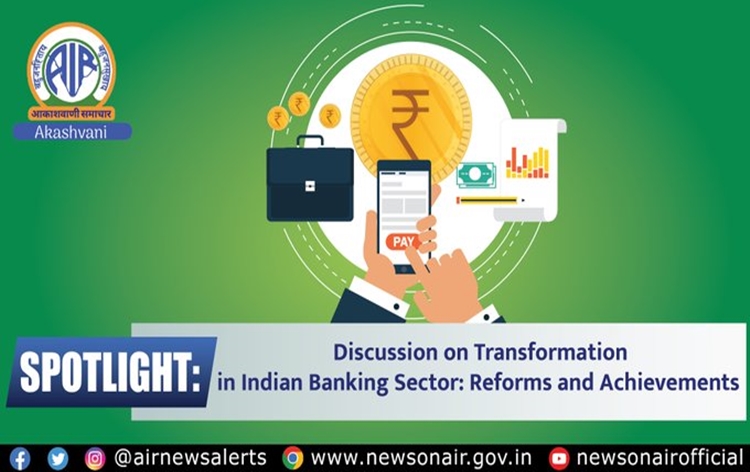In a recent episode of the program "Spotlight", a comprehensive discussion on the transformation in the Indian banking sector, its reforms, and achievements was presented. Ishan Mittal, the anchor, engaged in an insightful conversation with Siddharth, an esteemed Economic Analyst, to shed light on the positive developments in India's banking industry under the leadership of Prime Minister Narendra Modi.
Mr. Siddharth began by discussing the significance of the bankruptcy code introduced in 2016, a landmark legislation that aimed to minimize bank losses. The code allowed for insolvency cases to be initiated, and just the fear of being ousted as promoters resulted in the resolution of many cases even before they went to the National Company Law Tribunal. This fear factor led to the closure of cases and the resolution of claims for creditors, yielding significant results. Notably, banks and creditors were able to recover about 168 to 169% of the liquidation value, proving the effectiveness of the bankruptcy code in improving credit culture and corporate governance.
The conversation moved on to India's success in resolving the twin balance sheet problem faced by public sector banks since the 2008 financial crisis. The net non-performing asset ratio of scheduled commercial banks hit a 10-year low of 3.9% in March, down from 6.1% at one point. The government, in collaboration with the Reserve Bank of India (RBI), insisted on recognizing loans and addressing problems promptly, leading to greater formalization of the economy and more people becoming part of the formal banking system. The government provided capital to public sector banks to ensure their balance sheets remained healthy and they could meet the growing economy's credit requirements.
Mr. Siddharth also discussed the RBI's measure called Expected Credit Loss, a proposed framework for provisioning by banks, which aims to check the impairment of credit and prepare banks to face possible credit risks in the future.
In the context of India's vision of becoming a $5 trillion economy and promoting financial inclusion, Mr. Siddharth emphasized the significance of cleaning up the banking system to prepare it to meet the country's credit requirements. Initiatives like Jan Dhan, Mudra, PM Awas, and street vendor schemes have enabled greater formalization of the economy and improved access to credit for the unbanked population. The government's guarantee scheme has further provided comfort to banks in lending to these segments.
The discussion touched on S&P's forecast that Indian banks' bad loans may moderate to 3 to 3.50% by 2025. Mr. Siddharth noted that this figure suggests a positive outlook for the banking sector and the economy, indicating that current initiatives for cleaning up banks are likely to persist, and the economy is expected to perform well.
Full discussion can be heard at https://youtu.be/VKNFY_mCcrc
News On AIR | July 25, 2023 8:07 PM | Indian Banking Sector: A Journey of Reforms and Achievements
Indian Banking Sector: A Journey of Reforms and Achievements


